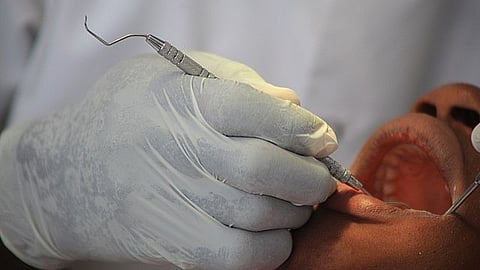

Introduction
In the ever-evolving landscape of modern medicine Nanotechnology stands at the forefront of innovations. Within the realm of dentistry, the convergence of nanotechnology and oral healthcare has given rise to a burgeoning field known as Nanodentistry. The term Nanodentistry was coined by R.A. Freitas in 2000.By harnessing the unique properties of materials at the nanoscale, Nanodentistry holds the potential to transform the way we diagnose, treat, and prevent oral diseases, paving the way for a future of personalized, minimally invasive, and highly effective dental care. In this article we delve into the fascinating world of Nanodentistry by discussing some of the current developments, applications and challenges.
Nanodentistry in Operative and Restorative dentisty
Dental nanocomposites posess enhanced mechanical, chemical, and optical properties, contributing to their effectiveness in various dental applications.
Restorative composites infused with antimicrobial nano-agents and materials designed to release nano fluoride
Biomimetic tooth analogue materials, mimicking the nanoscale architecture of enamel and dentin, along with their anisotropic properties, contribute to minimally invasive tooth removal procedures.
Nanodentistry in Preventive Dentistry
Dental pastes containing remineralizing nanoparticles helps in relieving denin hypersensitivity
Nano fluoride–ion releasing materials for prevention of dental caries
Nano systems enabling dental plaque monitoring
Nanodentistry in diagnosis
Quantum dots are used as probes for diagnosis of oral cancer, which are cadmium-selenide inorganic semiconductor nanocrystals.
Nanodentistry in Prosthodontics
In the fabrication of dentures ,to overcome low strength, fracture resistance, and microbial adhesion nanoparticles like TiO2 and Fe2O3 are incorporated into polymethyl methacrylate(PMMA). Which enhanced the modulus of strength, ductililty, esthetic properties of PMMA and also developed antimicrobial properties
Nanozirconia ceramic has improved the hardness and reduced brittleness of dental crowns.
Nanodentistry in Oral surgeries
Discovery of nanotweezers and nanoneedles can be helpful in cellular surgeries in the future.
Nanodentistry in Endosseous dental root implants
Nano TiO2 coatings are utilized to enhance the corrosion resistance of implants
Nano modifications on the implant surface for better and faster osseointegration, enabling earlier implant loadings.
Nanodentistry in orthodontics
Dental nanorobots could potentially manipulate periodontal tissue and thereby facilitate the precise adjustment of teeth to desired positions .
Nanodentistry in Endodontics
Utilizing novel active nano biomaterials, there are procedures aimed at healing and regenerating pulp and periodontal tissues in endodontic regeneration.
For the treatment of periodontal diseases Triclosan-loaded nanoparticles has been devoloped.
Nanodentistry for Oral Medicine
In order to treat oral cancerous or other diseases, dental local nano containers can be placed in the oral cavity as a local drug delivery system.
Nanodentistry in Periodontics
Nanoparticles are incorporated into scaffolds, Membranes, artificial bone foams, and injectable systems aimed to enhance osteoconductivity and improve the quality of osseointegration
Nanocarriers containing antibacterial drugs and osteogenic growth factors are used.
Challenges of Nanodentistry
Difficulties in simultaneous manipulation of nano robots.
Difficulties in manufacturing nanomaterials which should be bio friendly.
Hazards posed by of nanoparticles because of its capacity to interact with DNA and RNA and hence produce mutations.
Social and ethical challenges such as public acceptance.
CONCLUSION
Nanodentistry represents a groundbreaking frontier in oral healthcare, leveraging the power of nanotechnology to revolutionize diagnosis, treatment, and prevention strategies. With its ability to enhance the properties of dental materials, improve drug delivery systems, and enable precise tissue manipulation, nanodentistry holds immense promise for addressing current challenges in dentistry and ushering in a new era of personalized, minimally invasive, and effective oral care. As research and development in this field continue to advance, we can anticipate remarkable innovations that will not only transform dental practice but also enhance the overall well-being of patients worldwide.
REFERENCES
Poster on Nanotechnological impact on dental materials and procedures by Tijana Lainovic and Larisa Blazic ,2014
Nanodentistry: Is just a fiction or future by Himanshu Aeran, Varun Kumar, Shashank Uniyal, Pooja Tanwer. 2015.
Nanodentistry: The road ahead by Atom, Jenny, Rati, Ningthoukhongjam2; Deepak, B. S, Chandarani, Sagolsem, Devi, T. Premlata, Priyadarshini ,2023
Nanotechnology and dentistry by Sule Tugba Ozak and Pelin Ozkan , 2013
The nano era in dentistry by Sneha S Mantril and Shivkumar P Mantril , 2013
(By Amingold MJ)
SB
